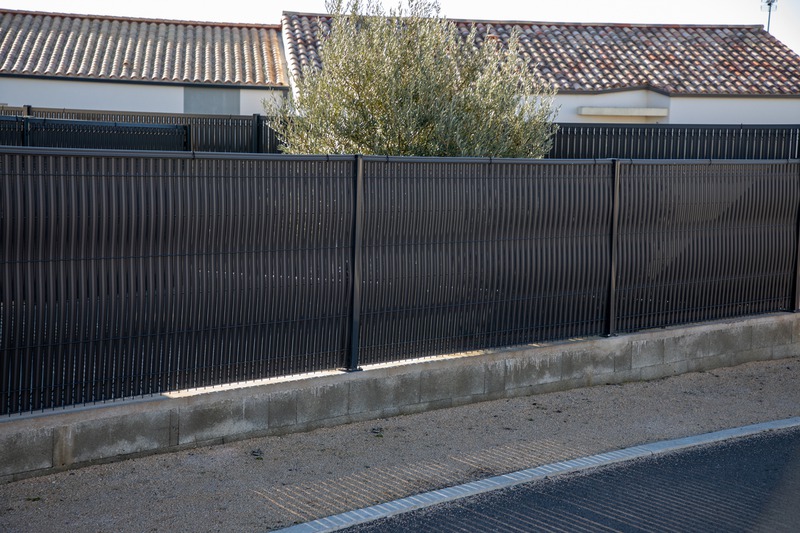When choosing materials for your fence, consider several key factors to ensure it meets your needs for durability and performance. Start by evaluating the climate in your area, as some materials fare better under certain weather conditions. For example, metal and vinyl are excellent for resisting rain and corrosion, while wood brings rustic charm but requires regular maintenance. Also, think about your soil type, as certain materials, like concrete posts, are better suited for stability in softer grounds. Additionally, budget can play a significant role, so weigh initial costs against long-term savings from durability and maintenance needs.
Consider Your Climate
Your local climate plays a crucial role in determining the most suitable materials for your fence. Areas with high humidity might require materials that resist moisture, while hot, dry climates need materials that won’t crack or warp under intense sunlight.
-
Wood: Great for many environmental conditions but may require treatments to prevent moisture damage or termite infestations.
-
Vinyl: Ideal for wet climates as it resists water damage and doesn’t require much maintenance.
-
Metal: Durable and resistant to environmental changes, but might rust in excessively damp climates unless treated properly.
Understanding Your Budget
The cost of fencing materials can vary significantly. Before making any decisions, establish a clear budget for your project. Remember, while some materials might be cheaper upfront, they might cost more in long-term maintenance.
-
Chain Link: Generally the most affordable option, but it lacks privacy and can rust over time.
-
Wood: Mid-range cost with a classic look, but requires regular staining or painting.
-
Vinyl and Composite: Higher initial cost but low maintenance and long-lasting.
-
Metal: Varies by type; aluminum is pricier but rust-resistant, while steel is durable and cost-effective.
Define the Purpose of Your Fence
Understanding why you need a fence helps narrow down material choices. Do you want privacy, or are you merely marking territory? Maybe it’s just about keeping pets and children safe inside the yard.
Privacy and Security
If your primary goal is to create a secluded space, solid material options like wood or vinyl are excellent choices. They’re opaque and can be built to a height that keeps prying eyes out.
Decoration and Style
For those who are more focused on aesthetics, wrought iron offers an elegant touch, while wood provides a warm, natural look.
Durability and Safety
-
Composite Materials: Combine longevity with strength and often come with a warranty.
-
Metal Fencing: Typically the best choice for strength and can withstand harsh weather.
Maintenance Requirements
How much time are you willing to spend on maintaining your fence? Some materials demand more attention than others, and knowing this can help you make the right choice.
-
Wood: Beautiful but requires regular maintenance, such as staining or painting.
-
Vinyl: Low-maintenance, needs only occasional washing.
-
Metal: Needs rust prevention treatments but is generally low maintenance when treated.
Evaluating Style and Aesthetics
A fence should complement your home’s architecture and enhance its overall appeal. Choose materials that reflect your personal style and fit with the neighborhood’s character.
-
Cedar or Redwood: Offers a classic and natural appearance.
-
Aluminum: Provides a modern and sleek look.
-
Vinyl: Available in various colors and styles to mimic other materials.
Experts and Installation
While DIY can be rewarding, installing a fence isn’t always a walk in the park. Professional help ensures that your fence is installed correctly and will stand firmly for years to come. Don’t forget about gate installation—it’s just as important as the fence itself for functionality and easy access to your space.
Local Recommendations and Regulations
Before setting your heart on a material, check local building codes and HOA regulations. Some areas have rules about the height, style, and even material of fences. A local expert, such as a fence company Caldwell, can provide insights into local regulations and popular materials for your area.
Environmental Impact
Think about the environmental impact of your choice. Renewable resources like wood or recyclable options like metal might appeal to eco-conscious homeowners. Certain composite options are also made from recycled materials, offering an eco-friendly balance.
Ensuring Longevity
Once you’ve chosen your material, take steps to ensure its longevity. Regular maintenance prolongs the life of wood fences while treating metal fences with anti-rust products can help preserve their integrity.
Engaging with a local expert, such as a fence company Boise, can provide valuable guidance on maintenance tips specific to your fence material.
Final Thoughts
Selecting the appropriate material for your fence is crucial to ensure longevity and satisfaction. Start by assessing the climate in your area—some materials may fare better in moist, dry, or extreme weather conditions. Your budget will also play an important role, as different materials vary widely in cost. Consider the purpose of the fence, whether it’s for privacy, security, or aesthetics. Maintenance requirements should align with how much upkeep you’re willing to handle. Lastly, check any local regulations or guidelines that may dictate material or design. This comprehensive approach will lead to a durable and attractive fence.
